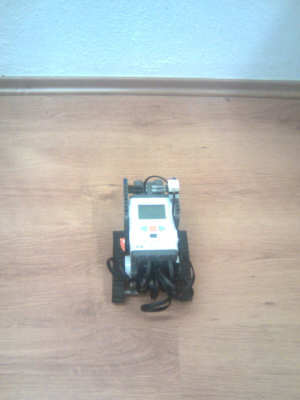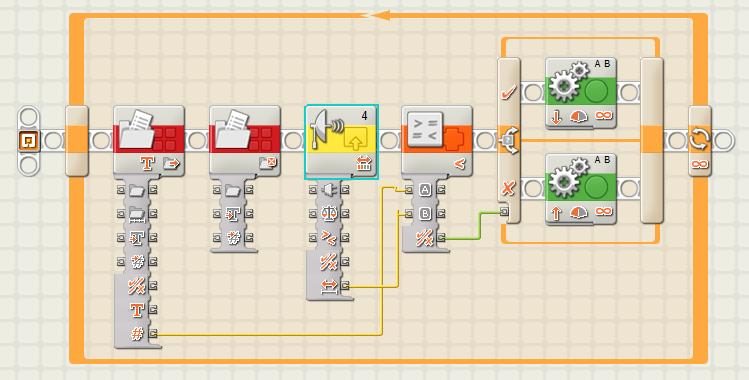NXT Logo Examples: A simple interactive control of NXT-G program from Imagine using files
In this project, we build a robot that has an ultrasonic distance sensor on the front and keeps a required distance from the wall: when the distance is lower, the robot moves back, when it is larger, it moves forward. In this way, the robot is also able to follow a person in a required distance, or go back when somebody approaches the robot...
We would like to make the program in such a way that we can interactively regulate this distance using a slider. Thus in Imagine Logo, we create a slider (it will get a name s1):
Whenever we move the slider to the left or right, we will change the distance of the empty buffer that the robot keeps in front of it: Imagine will write this value (in cm) directly to a file in NXT's flash memory using the following function:
to change_file let "d1 (div s1'value 10) let "d2 (mod s1'value 10) ignore nxt_delete "MyFile.txt let "handle last (nxt_openwrite "MyFile.txt 2) ignore nxt_write :handle (word :d1 :d2) 128 ignore nxt_close :handle wait 100 end
Finally, we need some program for the robot so that it will keep the distance according to the value in the file. This time, we make that program using standard NXT-G programming environment, and it will look as follows:
The robot repeats a loop: read a value from file, close the file, then read the value of the ultrasonic distance sensor on port 4, and finally compare the sensor readings with the value that was read from the file. Depending on the result of the comparison, the robot moves forward or backs up.


